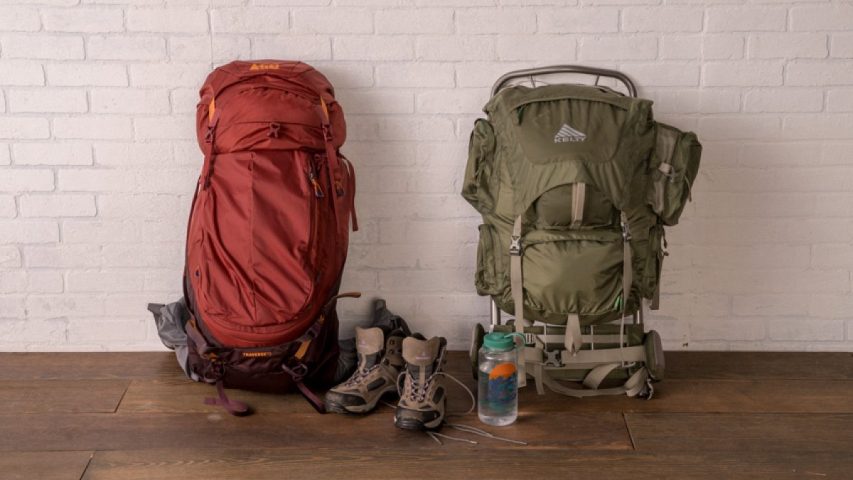There was a time when the external frame pack was the backpacker’s workhorse. Now, though, spotting one along the trail is like seeing a classic car on the highway. Sleeker and more innovative internal frame varieties rule the trails. While the majority of backpack buyers these days will choose an internal frame pack, it’s worth understanding the differences between the two styles.
Here are the main differences between external frame packs and internal frame packs:
External frame packs are easy to spot by their squarish packbag and visible frame elements, which are good for lashing on bulky gear, which is why trail crews and hunters might use them. External frame packs are best suited to use on well maintained, well graded trails.
In comparison, internal frame packs are more sleek and form-fitting. They hold the load closer to the body, which makes them more stable on rugged trails and when you’re scrambling off-trail. The slimmer profile is also less likely to catch on brush, branches or rock faces.
Here are additional key differences between external frame packs and internal frame packs:
-
- Selection: It’s not even close: Because so many more people are buying internal frame packs today, your range of choices in internals is far greater. And, if you’re looking for innovation, you’ll find that most of the cutting-edge designs are internals.
-
- Affordability: The adage that externals cost less is no longer true—bargains can be found in each type of pack. So, decide which frame style you prefer, then start deal shopping among comparable packs. As pack designs have evolved, the answer to which frame style is more affordable has changed. Initially, internals were less expensive because early internals won the cost battle by virtue of having either no frame or a very limited amount of structure. But internal structures have changed and the realm of super techy (pricey) packs is now dominated by internals. But that doesn’t mean you can’t find affordable options in both external and internal frame packs.
-
- Support: An external pack transfers the load nicely to your hips and allows an upright walking position that some find comfortable, though it also makes you less agile if you need to move quickly. An internal pack’s closeness creates stability, and most have suspension systems that transfer the load to hips efficiently. Advanced designs allow you to twist and turn yet keep the load balanced.
-
- Weight: Externals’ thick frame pieces make them heavier and few external pack makers are innovating with ultralight designs and materials. Internals’ frames are inherently lighter and you can find a range of options from lightweight to ultralight.
-
- Fit: Adjustable suspension systems on externals are rare, so you need to be sure the pack comes in a size that’s a decent fit for you. On the other hand, many internals come with an adjustable suspension that allows you to get a more precise fit.
-
- Cooling: Externals have a large gap between the frame and packbag that allows air to flow across your back. Some internals might have ventilation channels that offer a little bit of cooling; suspended-mesh back panels on others offer comparable airflow to external frame packs.
-
- Storage: Capacity measurements are done the same way for each type of pack, so a 60-liter external frame pack holds the same amount of gear inside as a 60-liter internal-frame pack. The exposed frame pieces on external packs are good for lashing on bulky and heavy items. Internal packs often have lash patches that allow you to attach some additional gear.
-
- Organization: Externals typically include lots of outer pockets that help you organize things; access to the main compartment is typically through the top of the packbag. Internals, by contrast, range from ultralight packs with very few pockets to deluxe designs with pockets aplenty. The access to the main compartment on internals also varies: It might be from the top or a front panel, with some models also offering side zippers to reach deep-down items.
-
- Aesthetics: The retro look of an external frame pack definitely has its fans, even though most pack buyers prefer the sleeker lines of an internal frame pack.
The future: Pack designers continue to innovate, so who knows what your options might be in the next few years? The trend toward ever lighter materials and designs will definitely continue.
The past: For a fun and fascinating look at the evolution of the backpack, from knapsack to external frame pack to internal frame pack and beyond, check out The History of the Backpack.
